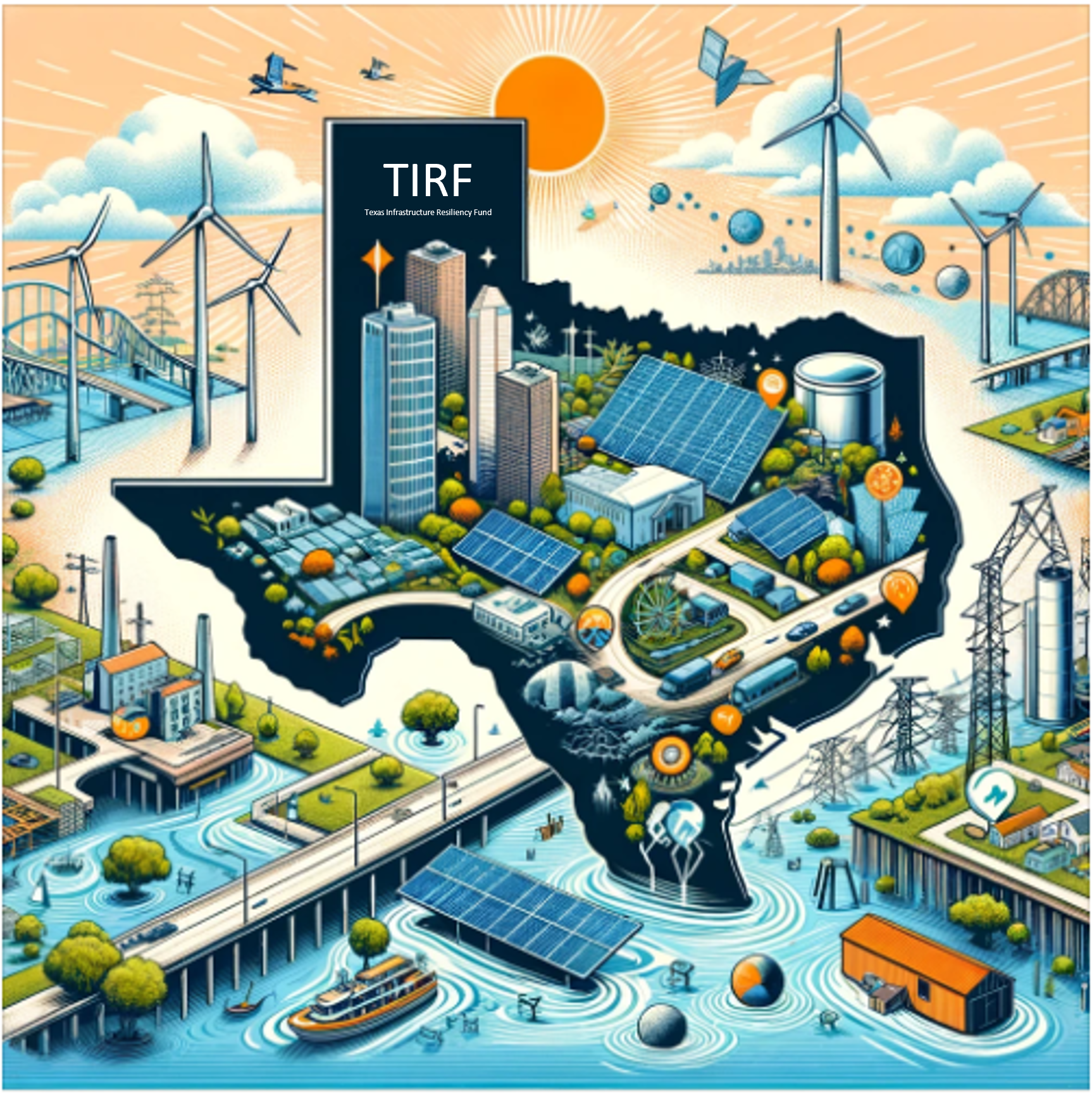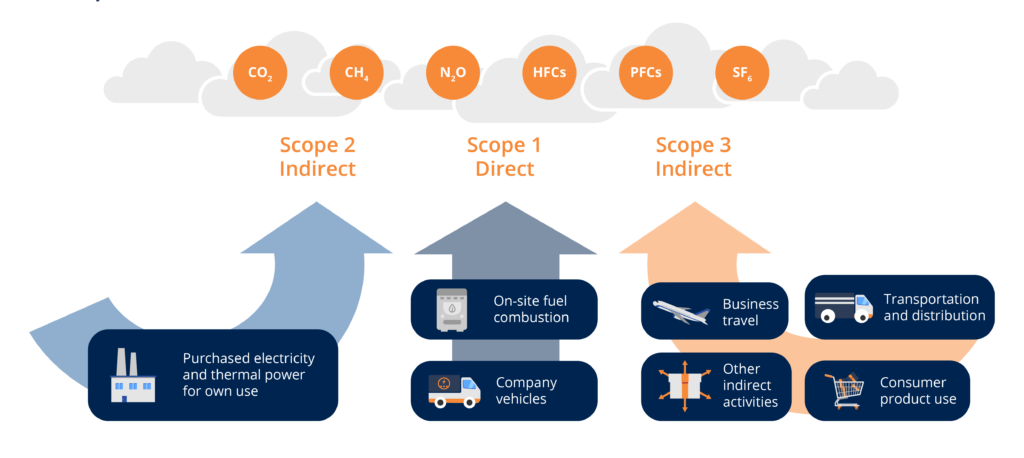Reducing Scope 1 Emissions Through On-Site Generation

A cogeneration-based on-site microgrid allows facilities to cut emissions while avoiding capital investment and reducing utility energy costs.
As companies work to meet ESG commitments and prepare for the proposed SEC reporting requirements, the focus shifts from goals to the concrete steps needed to meet those goals. Carbon accounting can be complex as firms try and negotiate how to count direct emissions, indirect emissions, and offsets. On-site microgrids most directly impact Scope 1 and 2 emissions without resorting to offsets.
Understanding the Three Types of Emissions
Greenhouse (GHG) emissions are divided into three Scopes of activity:
- Scope 1 Emissions: Direct emissions that company processes and buildings use to produce the service or product. Includes boilers and process heat, as well as emissions from company vehicles
- Scope 2 Emissions: Indirect emissions associated with the electricity the company purchases from the utility
- Scope 3 Emissions: Downstream emissions, such as those related to inputs and outputs of the production supply chain, as well as emissions from customers interacting with the company’s products
Scope 1, 2, and 3 Emissions
The Challenges Facilities Face in Achieving Large-Scale Reductions
For carbon commitments, companies typically prioritize Scope 1 and 2 emissions, which are under their direct control. Solutions exist for Scope 2 emissions, such as installing on-site solar, but Scope 1 emissions remain stubbornly difficult to address.
Scope 1 Challenges:
Industrial facilities with large thermal loads, especially those with process heat or steam, find it impractical or impossible to electrify, and the switch to low-carbon hydrogen fuel is still years away. For large facilities with sizable heating loads, such as hospitals, capex investments and operating costs often make it too expensive to electrify loads. Facilities are stuck making modest improvements, with small efficiency gains from controls upgrades and more efficient modern boilers.
Scope 2 Challenges:
Sites can use solutions like on-site solar to address Scope 2 emissions. However, sites that don’t have space for solar panels struggle to implement meaningful solutions. Many companies purchase carbon offsets or virtual power purchase agreements (VPPAs). Indeed, the voluntary offsets market exceeded $1 billion in 2021 and continues to grow. However, choosing offsets has little impact on how a company or facility operates, allowing companies to make a financial commitment while implementing few internal changes that truly reduce emissions. As we discussed in our related article The Problem with Carbon Offsets, offsets and VPPAs are falling out of favor as a solution because this market lacks regulations and oversight, making it difficult to know if offsets are effective. This adds financial, accounting, and ESG risks, as regulatory changes create uncertainty.
How On-site Power Generation Addresses Scope 1 and 2 Emissions
An on-site microgrid that utilizes cogeneration, also known as combined heat and power (CHP), empowers a facility to tackle Scope 1 emissions directly. An on-site CHP microgrid using natural gas turbines or engines produces electricity for the facility while releasing emissions that are typically similar to the Scope 2 emissions already being used at the facility.
However, the real gain for the facility comes from capturing the waste heat from the exhaust or jacket water (for engines). The facility can directly reduce its boiler usage by using waste heat to produce hot water or to generate steam using a heat recovery steam generator (HRSG). As a result, a site may see boiler usage reductions of 30-40% or as high as 100% depending on its thermal load.
Unison Energy offers an Energy-as-a-Service (EaaS) contract where we own and operate the cogeneration system and sell hot water and steam to the site. The electricity is treated as Scope 2 emissions because we are a third party providing electricity, similar to a utility. The site uses the waste heat from the cogeneration system and turns down its boilers, reducing natural gas usage and thus directly reducing Scope 1 emissions.
An Easier Way to Address Scope 1 Emissions
Unison Energy’s microgrids lower Scope 1 emissions for facilities, require no upfront capital, and typically reduce operational costs. Using the EaaS model, Unison finances and owns the microgrid on our balance sheet, charging our clients only for energy used (kWh, therms) over the life of the contract. Because cogeneration utilizes waste heat, it is about 35% more efficient than the utility and typically results in lower electric bills for the facility, sometimes as much as 10-20%.
During a recent energy evaluation for a food & beverage facility in the Midwest that uses process steam, we determined that adding a CHP system to the microgrid design would reduce the site’s emissions by 7,406 tons, cutting 67% of the boiler’s natural gas usage. (The facility’s Scope 2 emissions related to electricity use would remain roughly equivalent.) In addition, with Unison covering the CHP system’s upfront cost of $9 million, the facility would save $322k per year, or 8% of its total electricity and gas costs.
What’s more, with CHP you can future-proof your path to zero. You’ll be able to make additional future emission reductions by adding carbon capture and sequestration, hydrogen, or biofuel as they become cost-feasible.
Achieve Your ESG Goals with Unison Energy
Unison Energy can help you reduce Scope 1 emissions while taking advantage of a limited-time financial opportunity. With the passage of the Inflation Reduction Act, facilities have an opportunity to implement clean energy projects, such as microgrids using CHP, solar, and other green technologies, while enjoying tax incentives. We can help you take advantage of the 30% investment tax credit for projects that start before the end of 2024, and can assess whether your site is eligible for an additional 10% bonus. With the passage of the IRA, the time for facilities to join the energy transition is today.

To learn more about how your facility could reduce Scope 1 emissions while saving on electricity costs, click here to contact a Unison Energy sales representative.
Energy insights, delivered
Subscribe for more content.
Related Blogs

The Texas Infrastructure Resiliency Fund: Empowering Businesses with Onsite Microgrids
Deadlines for the Inflation Reduction Act
Canadian Carbon Reduction Incentives: What You Should Know
